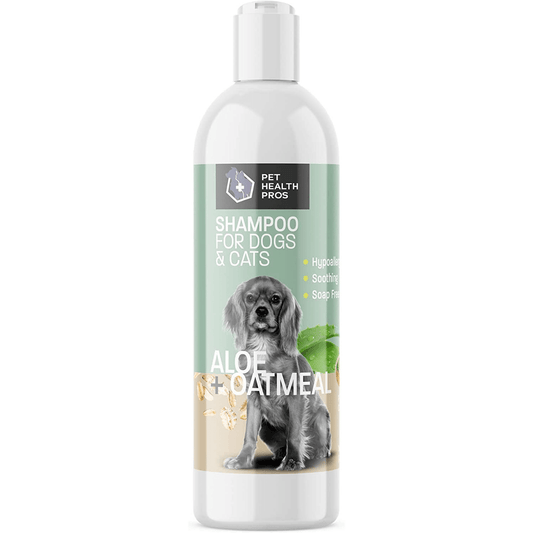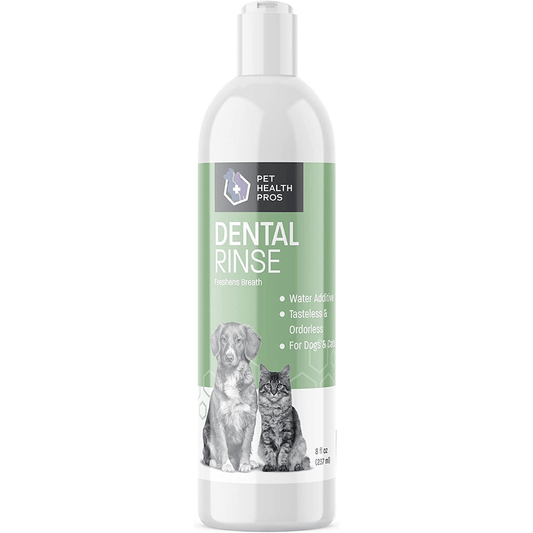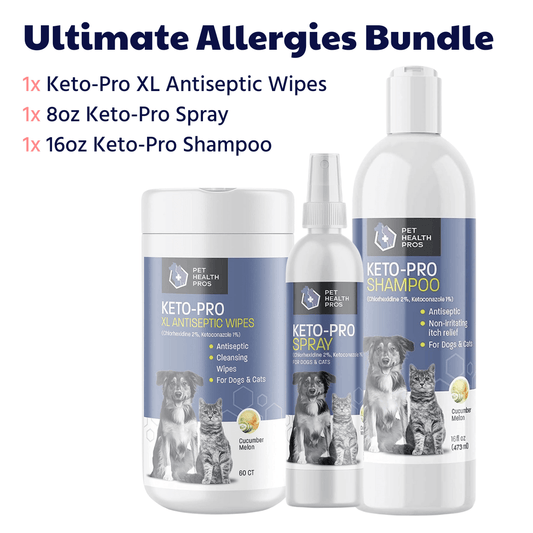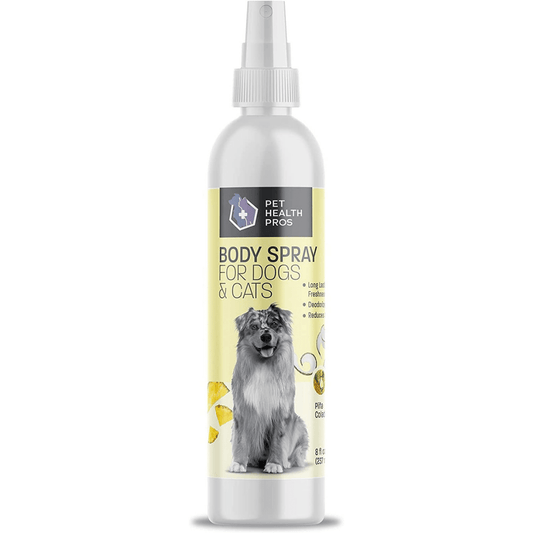Ensuring the health and comfort of our furry friends involves understanding and caring for all aspects of their well-being, including the often-overlooked area of anal gland health. This beginner's guide, brought to you by Pet Health Pros, a U.S.-based company with over fifty years of experience in veterinary medicine, offers a comprehensive approach to safely expressing your dog's anal glands. Backed by a 100% satisfaction guarantee and a dedication to superior, affordable pet health supplies, Pet Health Pros provides not just products but also the knowledge necessary to maintain your pet's health and happiness.
Key Takeaways
- Understanding anal gland function and spotting issues is crucial for preventing discomfort and potential health complications in dogs.
- Preparing for anal gland expression involves gathering the right supplies, creating a calm environment, and knowing safety measures.
- A gentle, step-by-step approach to expressing your dog's anal glands minimizes stress and ensures the procedure is done correctly.
- Post-expression care is vital for hygiene and monitoring your dog for any signs of complications, warranting a visit to the vet if necessary.
- Regularly integrating anal gland health into your pet's routine, through diet, exercise, and check-ups, can prevent issues and support overall well-being.
Understanding the Importance of Anal Gland Health
What Are Anal Glands and Their Function?
Anal glands, also known as anal sacs, are two small glands located on either side of your dog's anus. These glands secrete a smelly fluid that is used for territorial marking and identification by other dogs. Proper functioning of the anal glands is crucial for your pet's comfort and well-being.
When a dog defecates, the pressure causes the glands to express naturally, releasing the fluid. However, some dogs may have difficulty with natural expression, leading to discomfort or health issues. It's important for pet owners to recognize when their dog might need help with this process.
Regular maintenance of anal gland health is essential to prevent impaction, infection, and abscesses, which can be painful and may require veterinary intervention.
Understanding the basic anatomy and the role of anal glands helps pet owners in identifying potential issues early on. By being proactive about your dog's anal gland health, you can avoid complications and ensure a happier, healthier life for your furry friend.
Recognizing the Signs of Anal Gland Issues
Recognizing the early signs of anal gland issues in dogs is crucial for their comfort and health. Scooting or dragging their rear on the ground is a common indicator that a dog may be experiencing discomfort. Other signs include excessive licking or biting at the anal area, a foul odor, and difficulty defecating. If you notice any of these symptoms, it's important to address the issue promptly.
Swelling or redness near the anus can also be a sign of impacted or infected anal glands. In such cases, the glands may feel harder than usual when gently palpated.
It is essential to consult with a veterinarian if you are unsure about the health of your dog's anal glands or if you observe any concerning symptoms.
Regular monitoring of your dog's anal gland health can prevent serious complications. Here is a list of signs to watch for:
- Scooting or dragging their rear
- Excessive licking or biting at the anal area
- Foul odor from the rear
- Swelling or redness near the anus
- Difficulty defecating
- Noticeable discomfort when sitting
The Consequences of Neglecting Anal Gland Care
Neglecting the care of your dog's anal glands can lead to uncomfortable and potentially serious health issues. Impacted anal glands are a common consequence, where the fluid inside the gland is not expressed and builds up, causing a blockage. This can result in discomfort, swelling, and even infection. If left untreated, the glands may become abscessed, requiring surgical intervention.
Infections and abscesses are not only painful for your dog but can also lead to more systemic health problems. Here's a brief overview of potential complications:
- Discomfort and pain
- Swelling and redness
- Difficulty defecating
- Foul-smelling discharge
- Scooting or licking the area excessively
- Potential for systemic infection
Timely and proper expression of the anal glands is crucial to prevent these issues. Regular monitoring and care can save your dog from unnecessary pain and save you from costly vet bills.
It's important to recognize the signs of anal gland issues early and to understand that proper maintenance can prevent these problems from developing. A healthy diet and regular exercise can also play a role in maintaining anal gland health.
Preparing for the Procedure
Gathering the Necessary Supplies
Before you begin the process of expressing your dog's anal glands, it is crucial to have all the necessary supplies on hand. Proper preparation can make the procedure smoother and more comfortable for both you and your pet.
The basic supplies you'll need include:
- Gloves to maintain hygiene and protect your hands
- Paper towels or a clean cloth for any mess
- A warm, damp washcloth to clean the area around the glands
- A lubricant such as KY Jelly to ease the expression
- A waste bin to dispose of used materials
It's also advisable to have some treats ready to reward your dog for their cooperation during the procedure.
Remember, using the right supplies not only ensures the safety and comfort of your dog but also helps prevent infections and other complications.
Ensure that all items are within reach before you start, to avoid any unnecessary interruptions. Having everything prepared in advance will help create a calm and controlled environment, which is essential when dealing with a potentially sensitive situation like anal gland expression.
Creating a Calm Environment for Your Dog
Creating a calm environment for your dog is crucial when preparing to express their anal glands. A relaxed dog is more cooperative, making the procedure smoother for both of you. Here are some tips to help create a serene atmosphere:
- Choose a quiet room where your dog feels safe and comfortable.
- Minimize distractions by turning off loud noises such as the TV or radio.
- Lay down a non-slip mat or towel for your dog to stand on, providing them with a sense of stability.
- Have your dog's favorite treats on hand to reward them for their calm behavior.
Remember, your own demeanor greatly influences your dog's mood. Stay calm and patient, using a gentle voice to soothe your pet throughout the process.
Incorporating practices from the top 5 ways to keep your dog calm at the vet can also be beneficial. Socializing your dog, bringing familiar items, and using calming aids are all strategies that can ensure a positive experience.
Safety Measures to Consider Beforehand
Before expressing your dog's anal glands, it's crucial to prioritize safety for both you and your pet. Ensure you have a clear understanding of the procedure and are comfortable performing it. If you're uncertain, seek guidance from a professional groomer or veterinarian.
Gloves are essential to maintain hygiene and protect against potential infection. Have a warm, damp cloth ready to clean around the anal area gently, as highlighted in the 5-Step Method to Externally Express a Dog's Glands. This will help prevent irritation and ensure all residue is removed.
Remember, the well-being of your dog is paramount. If at any point during the process your dog shows signs of distress or discomfort, it's important to stop immediately and consult a professional.
After the expression, follow up with post-expression care to avoid any complications. This includes monitoring your dog for signs of discomfort or infection, which may necessitate a visit to the vet.
The Step-by-Step Guide to Expressing Anal Glands
Positioning Your Dog Correctly
Proper positioning is crucial for the safe and effective expression of your dog's anal glands. Ensure your dog is calm and comfortable before beginning the procedure. It's best to have your dog stand or lie on its side on a stable, non-slip surface. Support your dog gently to prevent any sudden movements that could cause injury.
- Place a towel or waterproof mat under your dog for easy cleanup.
- Stand to the side of your dog, not directly behind, to avoid being in the line of possible gland secretion.
- Use one hand to lift the tail and expose the anal area, while the other hand will perform the expression.
Remember, the goal is to apply gentle pressure without causing discomfort to your dog. If at any point your dog shows signs of distress, pause and reassess your technique.
After positioning your dog, locate the anal glands, which are found at the four and eight o'clock positions around the anus. The glands should feel like small peas; if they are hard or enlarged, consult your veterinarian. By following these steps, you can help maintain your pet's anal gland health and prevent issues that may arise from improper care.
Gentle Techniques for Expressing the Glands
Expressing your dog's anal glands requires a delicate touch to ensure comfort and prevent injury. Using a light amount of pressure, gently milk the gland's contents toward you. It's important to be patient and use a consistent technique to avoid causing your dog distress.
Position your thumb and forefinger on either side of the gland, applying slight pressure upwards and inwards. When you can barely feel the gland, it's fully expressed. This method minimizes discomfort and is typically effective for most dogs.
Remember, if at any point your dog shows signs of pain or discomfort, pause the procedure and consult a veterinarian.
After expressing the glands, observe your dog for any signs of irritation or infection. Proper technique and aftercare are crucial for your dog's health and well-being.
What to Expect During the Process
When expressing your dog's anal glands, it's important to be prepared for the possible outcomes. Expect a small amount of fluid to be released, which should be brown and have a fishy odor. This is normal. However, if the fluid is bloody or pus-like, this could indicate an infection.
Consistency is key during the process. The fluid's texture can vary from thin to thick, and knowing what is typical for your dog will help you recognize any abnormalities. Here's what you should keep in mind:
- The fluid should not have blood or pus.
- A fishy odor is normal, but it should not be overwhelmingly foul.
- The glands should empty with gentle pressure; if not, stop and seek veterinary assistance.
After the procedure, your dog may feel some relief, but it's crucial to monitor them for signs of discomfort or irritation. If you notice any unusual behavior or symptoms, consult your veterinarian.
Remember, while expressing anal glands is a task you can do at home, it's always best to have a professional demonstrate the technique first. For ongoing care, consider the range of products from Pet Health Pros, which offers expert solutions for dog health, including supplements and antibacterial products to support anal gland health.
Post-Expression Care and Monitoring
Cleaning Up After the Procedure
Once you have successfully expressed your dog's anal glands, it is crucial to ensure that the area is thoroughly cleaned to prevent any discomfort or infection. Be sure to clean the area afterwards with pet wipes or a pet-safe shampoo and water after you express anal glands in dogs. This will help to eliminate any residual odor and bacteria.
Proper cleaning is not only about hygiene; it's about your dog's comfort and preventing potential health issues.
Additionally, consider the following steps to maintain cleanliness:
- Dispose of any used gloves, wipes, or paper towels in a sealed bag to contain the smell.
- Wash your hands thoroughly with soap and water, even if you wore gloves during the procedure.
- Clean any towels or cloths used during the process with hot water and detergent.
- If any fluids have come into contact with your clothing, change and launder the affected items promptly.
Remember, aftercare is as important as the procedure itself to ensure your dog remains healthy and happy.
Monitoring Your Dog for Any Complications
After expressing your dog's anal glands, it's crucial to monitor them for any signs of complications. Watch for unusual behaviors such as excessive licking or scooting, which could indicate discomfort or infection. A healthy anal gland expression should not cause lasting distress to your pet.
Be alert for these signs of potential issues:
- Swelling or redness around the anus
- Persistent foul odor despite cleaning
- Difficulty defecating or changes in stool consistency
- Signs of pain when your dog is sitting or touching the area
If you notice any of these symptoms, it's important to seek veterinary care promptly. Early detection and treatment can prevent more serious health problems. Remember, your dog's well-being is the top priority, and professional advice is invaluable when it comes to their health.
Consistent monitoring after the procedure ensures that any adverse reactions are caught early, allowing for timely intervention and care.
When to Seek Professional Veterinary Care
After expressing your dog's anal glands, it's crucial to know when to seek professional veterinary care. If you notice any abnormalities such as blood, pus, or an unusual odor, contact your veterinarian immediately. These could be signs of infection or other health issues that require medical attention.
Persistent discomfort or swelling after the procedure is also a cause for concern. Here's a list of symptoms that should prompt a visit to the vet:
- Excessive licking or biting at the anal area
- Difficulty defecating or changes in stool consistency
- Visible signs of pain or distress
- Recurrent issues despite regular expressions
Remember, while expressing your dog's anal glands can often be done at home, it is not without risks. Always prioritize your pet's safety and well-being.
If you're unsure about any aspect of the process or your dog's reaction, it's better to err on the side of caution and consult with a professional. Veterinarians can provide guidance and, if necessary, perform the expression in a safe and controlled environment.
Integrating Anal Gland Health into Your Pet's Routine
Diet and Exercise: Key Factors for Anal Gland Health
Maintaining a healthy diet and regular exercise regimen is crucial for your dog's overall well-being and specifically for maintaining healthy anal glands. High-fiber foods can help create bulkier stools, which in turn apply natural pressure on the glands during defecation, promoting regular expression. Here are some dietary considerations to keep in mind:
- Include a balance of wet and dry foods to manage hydration and stool consistency.
- Consider adding pumpkin or other high-fiber supplements to your dog's diet.
- Monitor your dog's weight, as obesity can contribute to anal gland issues.
Regular exercise not only helps in weight management but also stimulates bowel movements, aiding in the natural expression of the anal glands. A combination of walks, playtime, and structured exercise should be part of your dog's routine.
Ensuring your dog's diet and exercise are appropriate for their size, age, and breed is essential. Consult with your veterinarian to tailor a plan that's right for your pet.
Remember, regular health checks for pets are crucial for early detection of issues. Monitor weight, dental hygiene, mental well-being, and grooming. Physical exams are essential for pet dogs' well-being.
Regular Check-Ups with Your Veterinarian
Regular veterinary check-ups are crucial for maintaining your dog's anal gland health. Veterinarians can detect issues before they become problematic, ensuring timely intervention. During these visits, the vet will assess the anal glands for any signs of impaction, infection, or other abnormalities.
It's important to establish a routine schedule for these examinations. For most dogs, a semi-annual check-up is sufficient, but dogs with recurrent anal gland issues may require more frequent visits. Here's a simple guideline to follow:
- Every 6 months for healthy dogs
- Every 3-4 months for dogs with a history of anal gland problems
- Immediately, if you notice any signs of discomfort or changes in your dog's behavior
By adhering to a regular veterinary schedule, you can help prevent the discomfort and health issues associated with anal gland problems.
Remember, your veterinarian is your partner in your pet's health. They can provide personalized advice on diet, exercise, and other factors that contribute to healthy anal glands. Don't hesitate to ask questions and seek their expertise, especially if you're considering expressing your dog's anal glands at home. Consistency in care is key to your dog's well-being.
Pet Health Pros Products to Support Anal Gland Health
Incorporating the right products into your pet's routine can significantly contribute to their anal gland health. Pet Health Pros offers supplements to complement a pet's diet, available in various forms. These products are crafted in collaboration with veterinarians and are made with locally sourced, top-grade ingredients.
To ensure you're getting authentic products, it's recommended to purchase directly from the online store or through their Amazon storefront. Top products include nutritional supplements that support digestive health and grooming solutions tailored for your pet's well-being.
Remember, a healthy diet and regular grooming can help maintain proper anal gland function and prevent issues.
Pet Health Pros stands behind their products with a 100% satisfaction guarantee, reflecting their commitment to the health and happiness of your pets. Here's a quick overview of their offerings:
- Nutritional Supplements: Enhance your dog's diet with essential nutrients.
- Grooming Solutions: Keep your pet clean and comfortable.
- Digestive Aids: Promote healthy bowel movements and anal gland expression.
With over fifty years of combined experience in veterinary medicine and animal health management, Pet Health Pros is a brand you can trust for your pet's anal gland health needs.
Ensuring the health of your pet's anal glands is a crucial aspect of their overall well-being. Regular maintenance can prevent discomfort and serious complications. To learn more about how to integrate anal gland care into your pet's routine, visit our comprehensive guide. We provide detailed information and tips to help you keep your furry friend happy and healthy.
Conclusion
Expressing your dog's anal glands is an essential part of their health routine that can prevent discomfort and potential infections. While it may seem daunting at first, with patience and care, it's a task that can be safely managed at home. Remember to be gentle, use the right technique, and always prioritize your dog's comfort throughout the process. If you're unsure or encounter any complications, don't hesitate to seek professional help from a veterinarian. By incorporating this practice into your pet care regimen, you're contributing to your furry friend's overall well-being and happiness.
Frequently Asked Questions
What are the anal glands and why are they important for my dog's health?
Anal glands are small sacs located on either side of your dog's anus. They produce a scented secretion that helps dogs mark their territory. Maintaining their health is crucial to prevent discomfort, infections, and impactions.
How can I tell if my dog is having anal gland issues?
Signs of anal gland issues include scooting on the ground, licking or biting at the anus, a foul smell, or difficulty defecating. If you notice any of these behaviors, it's time to check your dog's anal glands.
What supplies do I need to express my dog's anal glands at home?
You'll need a pair of disposable gloves, paper towels or wipes, a warm washcloth, and a quiet, comfortable space. Ensure you have everything on hand before starting the procedure.
What should I expect when expressing my dog's anal glands?
During the expression, you may notice a small amount of fluid being released from the glands. It can have a strong, unpleasant odor. Be gentle and patient throughout the process to minimize discomfort for your dog.
How can I prevent anal gland problems in the future?
A healthy diet and regular exercise can help maintain normal anal gland function. Additionally, routine check-ups with your veterinarian can catch and address issues early.
Where can I find products to support my dog's anal gland health?
Pet Health Pros offers a range of products specifically designed to support anal gland health, developed in collaboration with veterinarians. Visit our online store or Amazon storefront to browse our selection.









